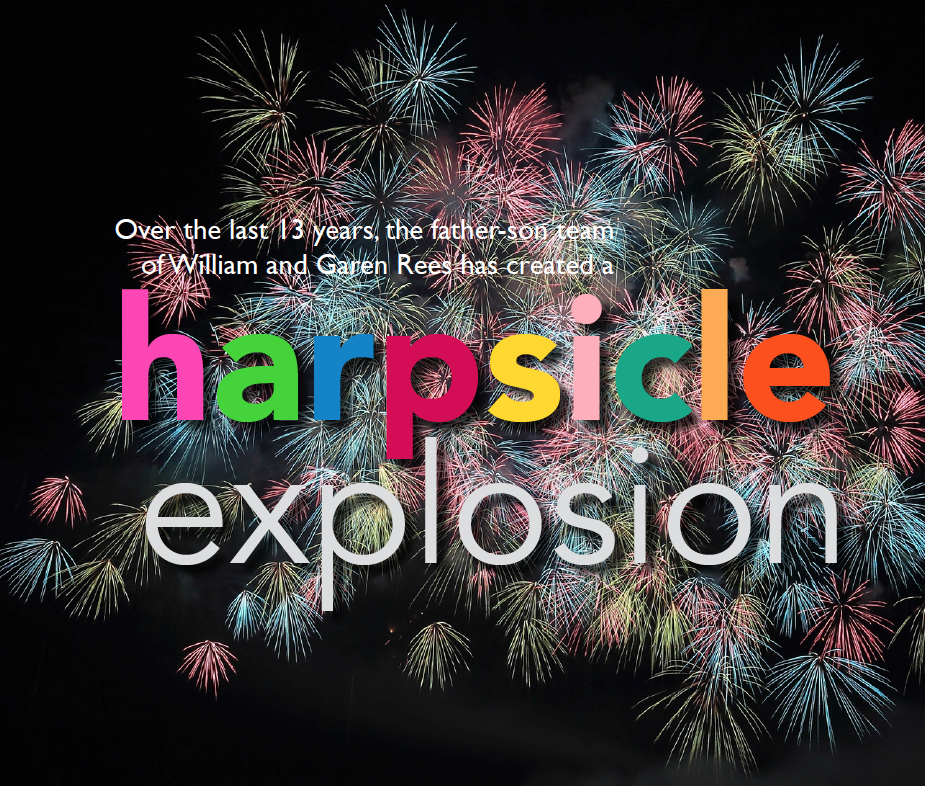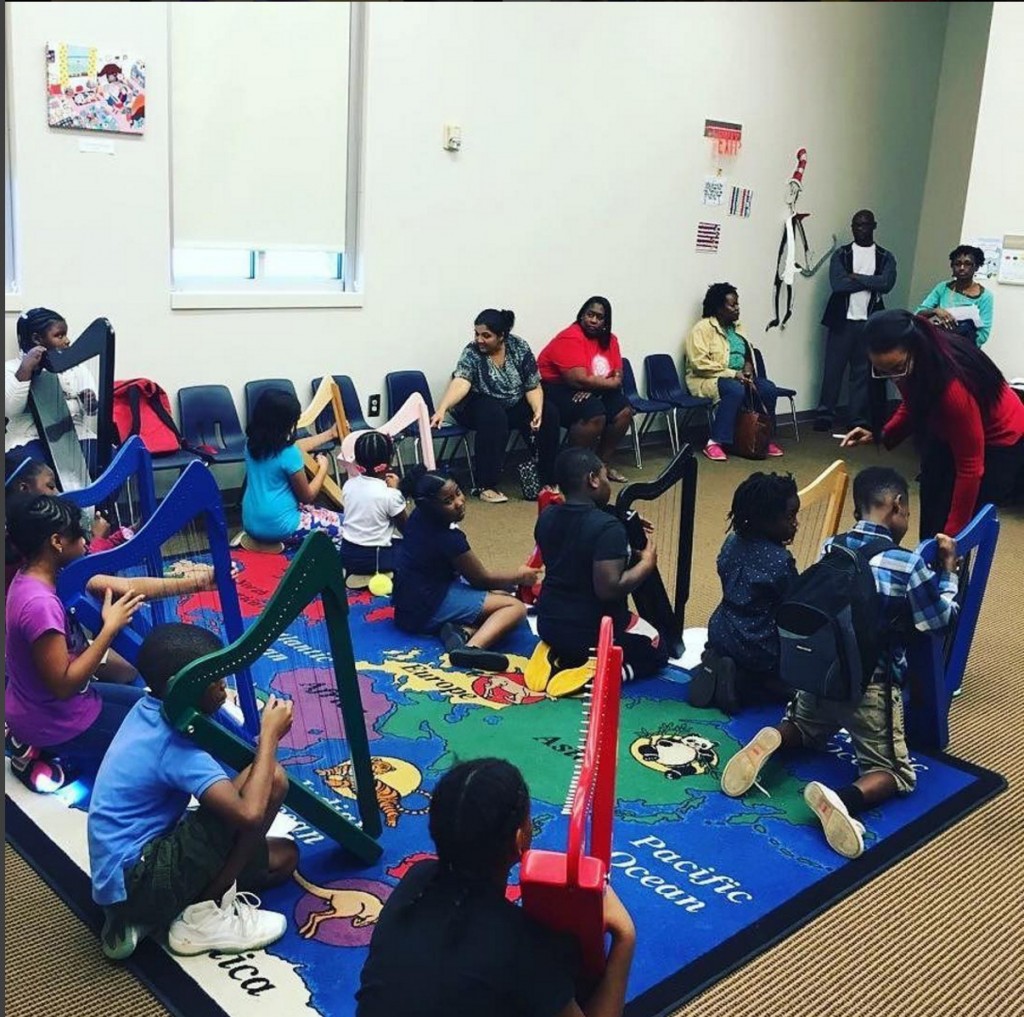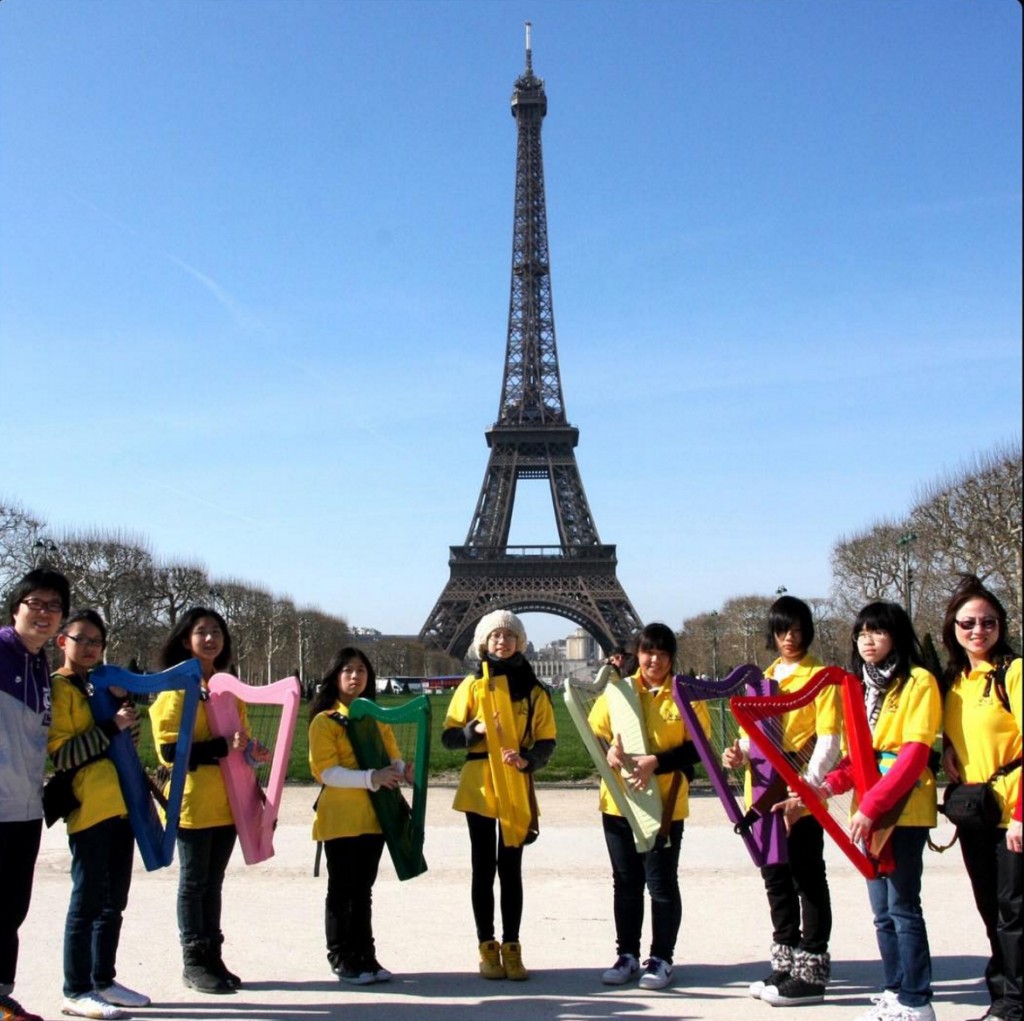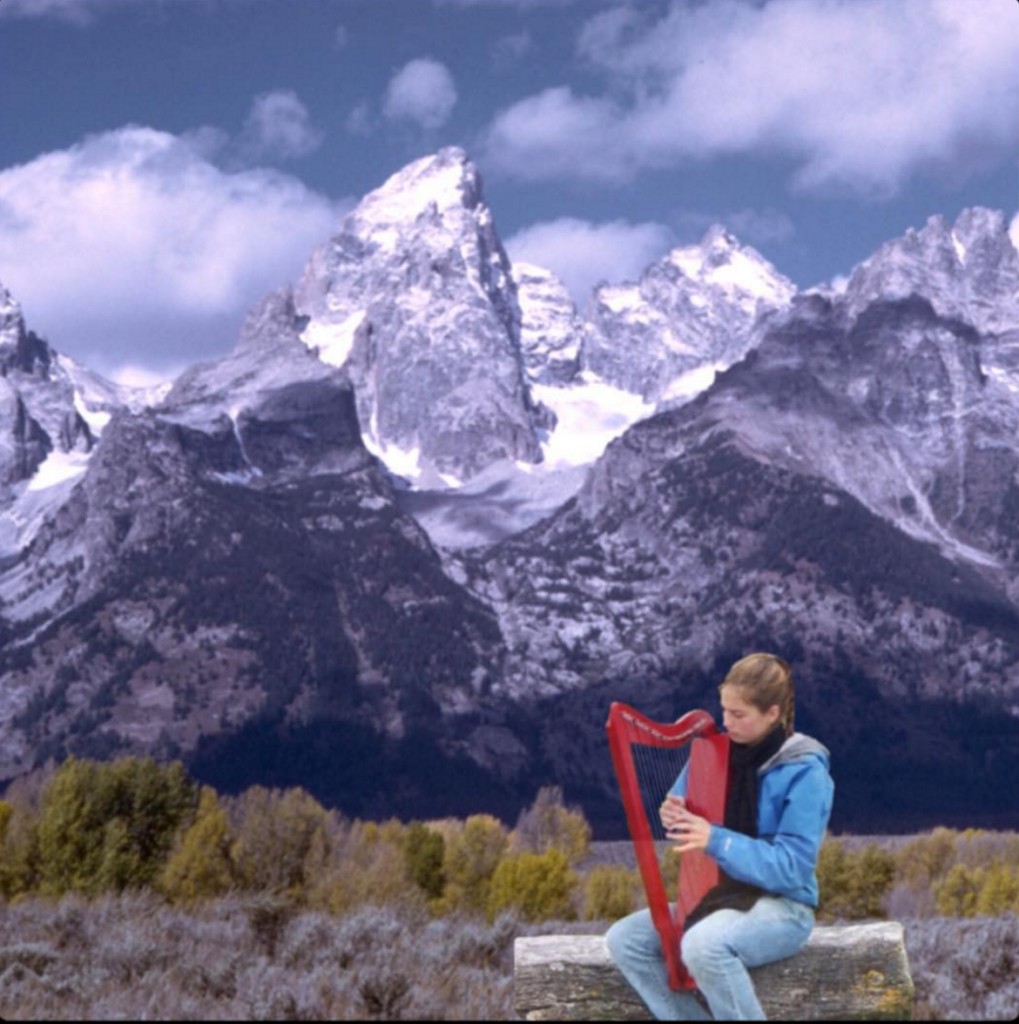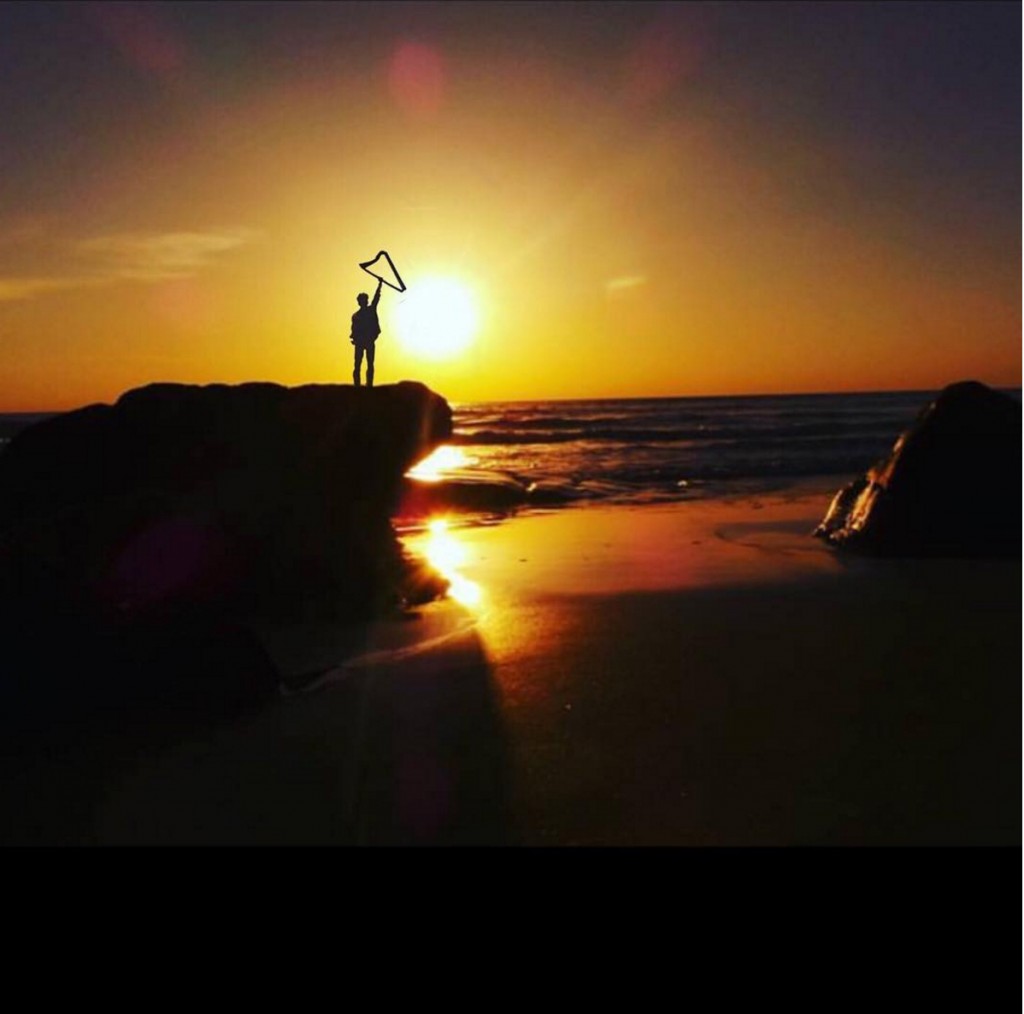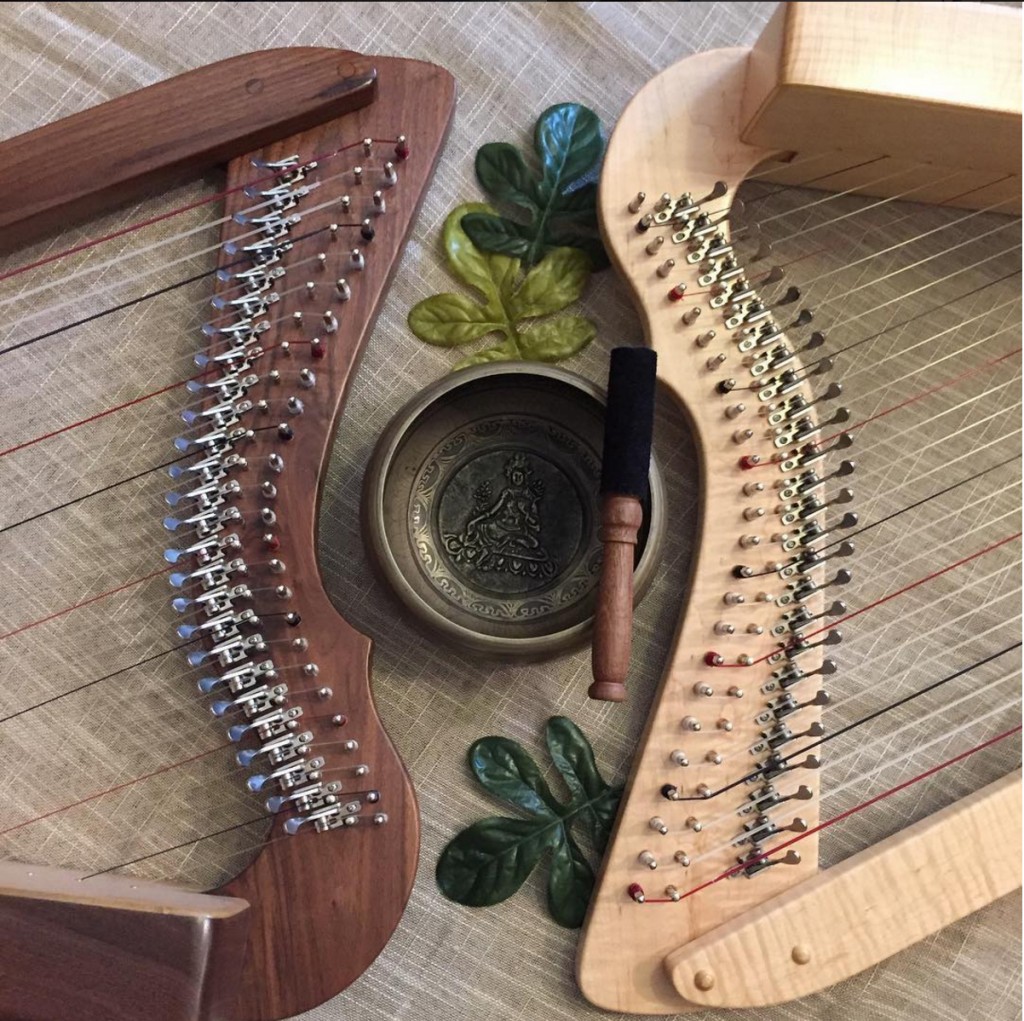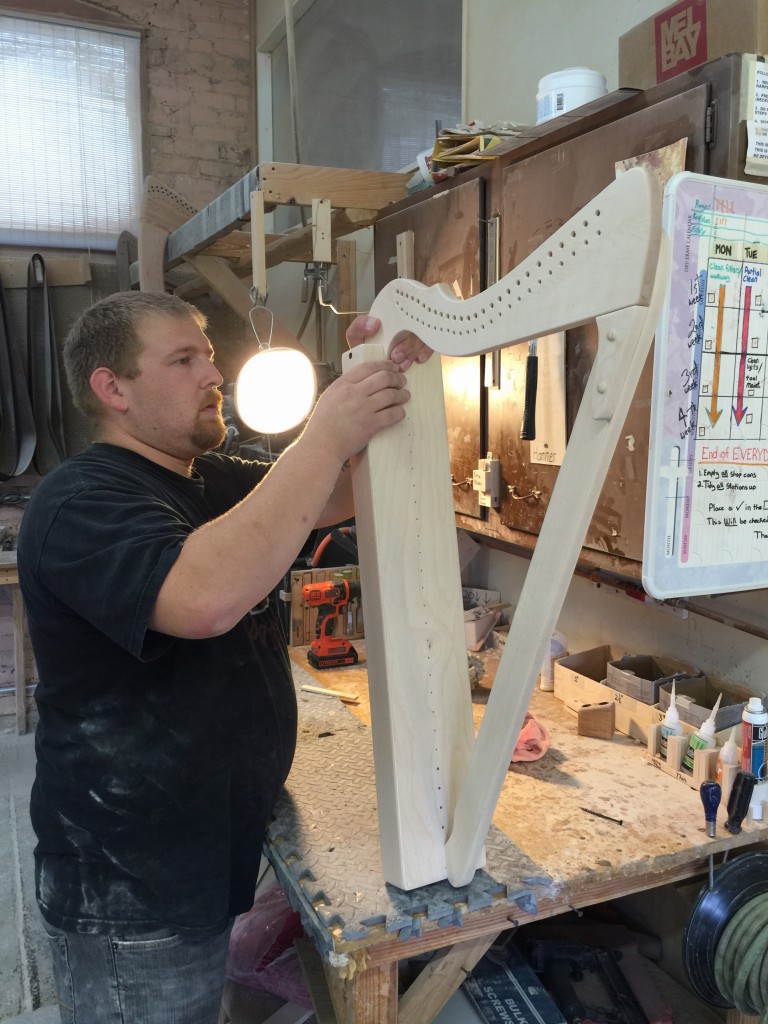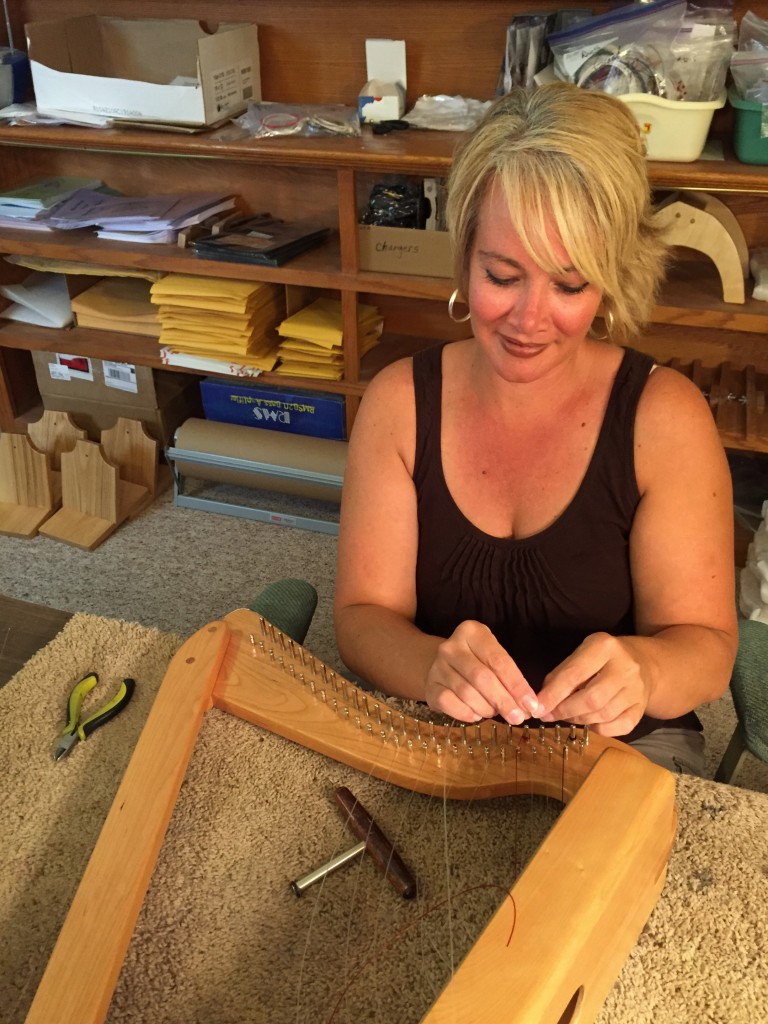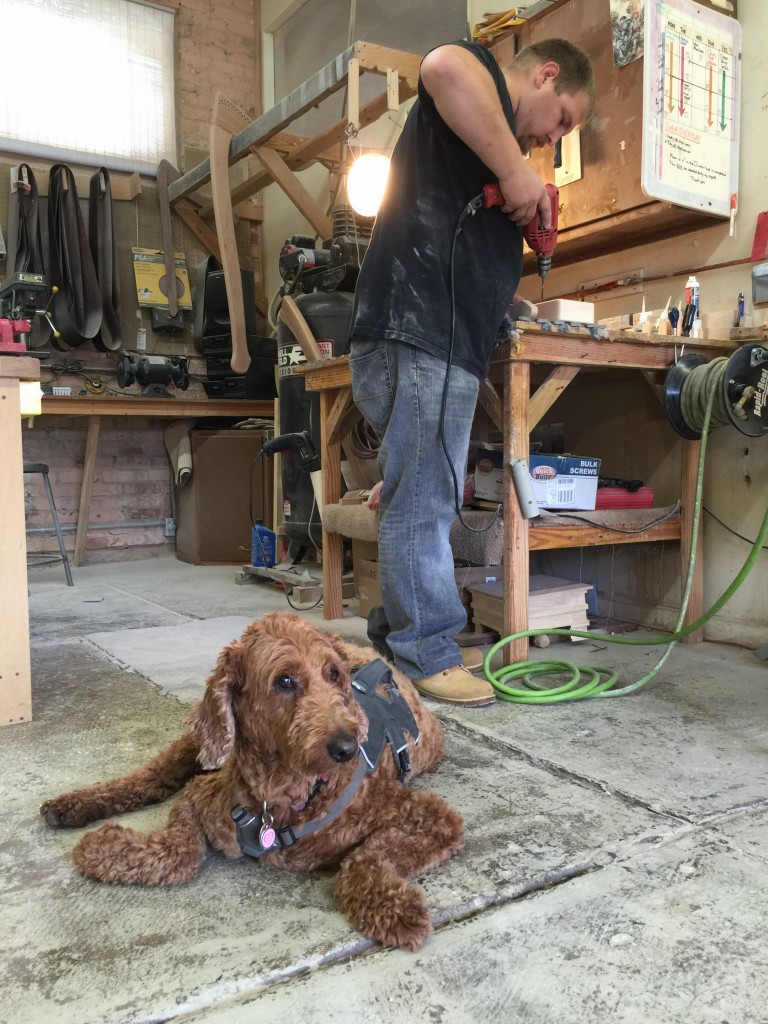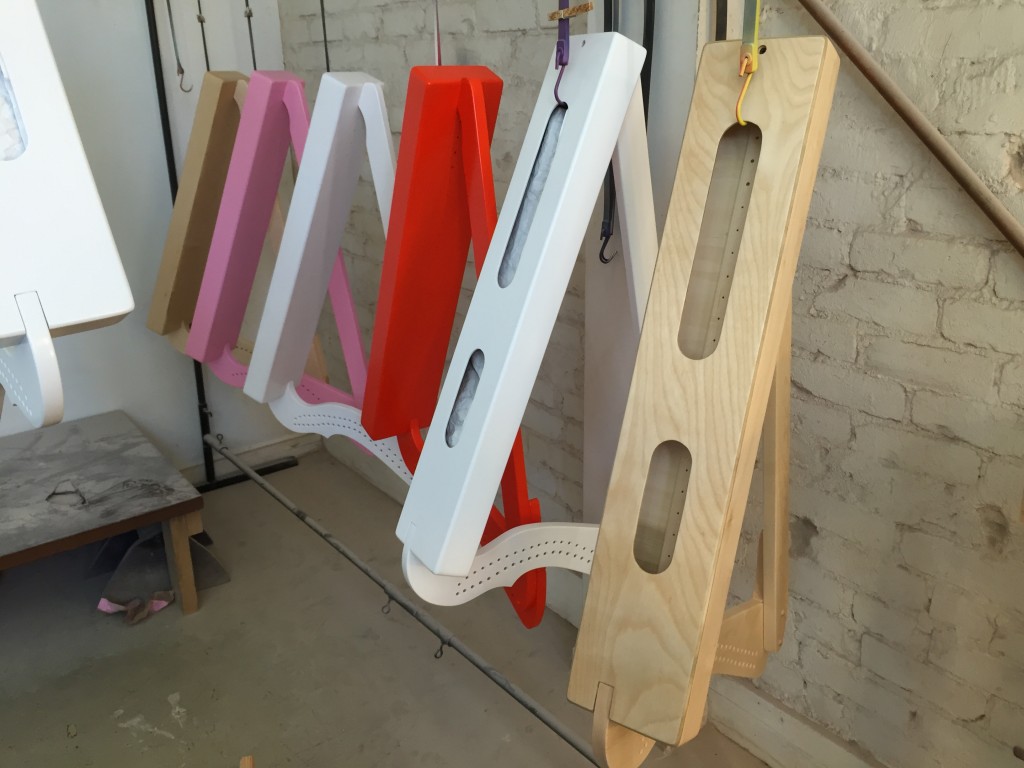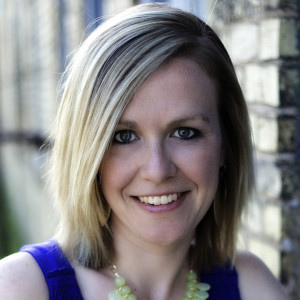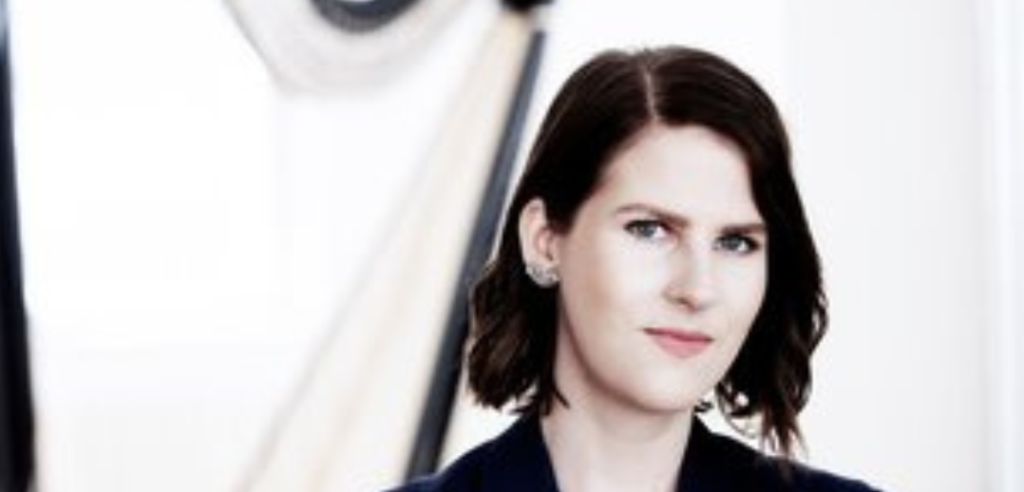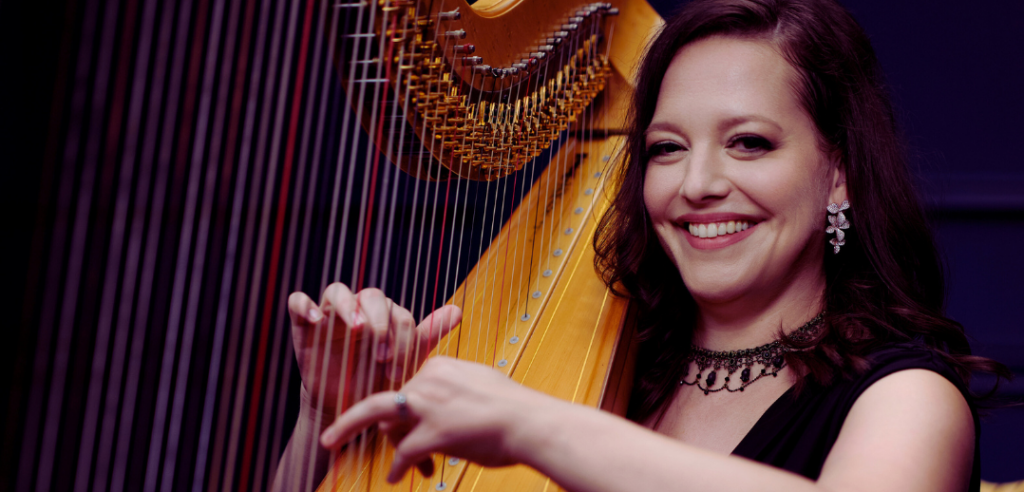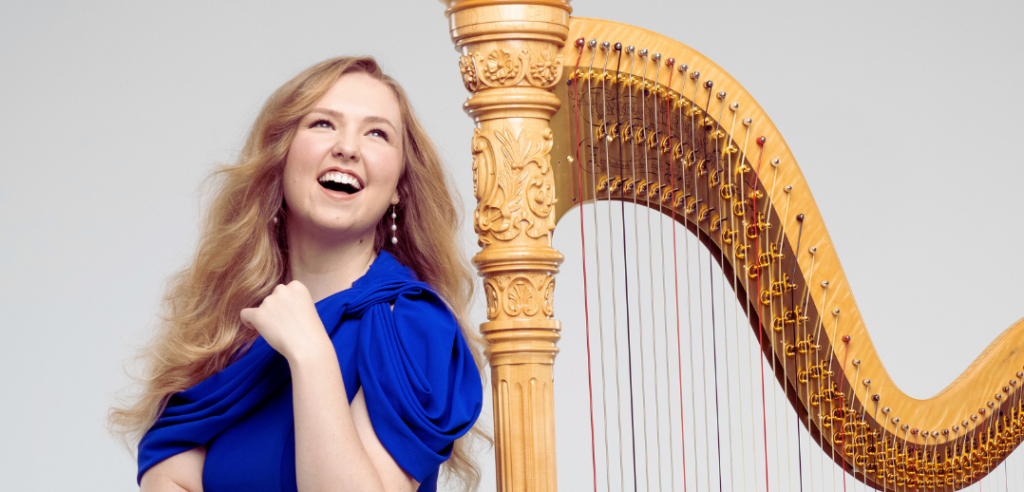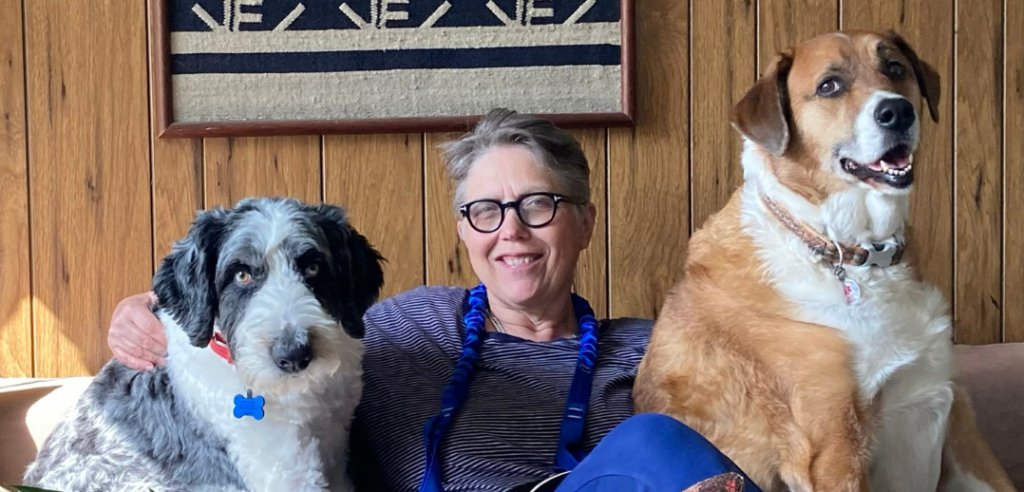(Click any photo to enlarge and view slide show.)
Even on the busiest street in the small, sleepy town of Rising Sun, Ind., there doesn’t appear to be much going on. But behind the doors of 222 Main Street, there is an explosion happening that is over a decade in the making. In a little shop in a little town on the Ohio River, Rees Harps is churning out hundreds of its wildly popular little Harpsicle harps each year. William Rees started building instruments several decades ago, eventually making his way to harps. Eventually his son Garen joined the family harp-making business, and they built a reputation for well-made traditional instruments.
In 2003, the father-son team came up with an idea that would change their business completely. They came up with a design for a tiny, compact, affordable harp that was so portable you could stick it in an airplane’s overhead compartment. The idea caught on immediately and their harp-making business became a Harpsicle-making business as the little, colorful instruments quickly became the bulk of their production. We sat down with William and Garen Rees in their old turn-of-the-century storefront-turned-factory to find out how they created one of the world’s most popular harps.
Harp Column: One thing that has struck me after seeing your operation here today and seeing you at different harp conferences and festivals, is you guys really seem to enjoy what you do. You seem to have a lot of fun building harps.
William Rees: Yeah, we do! [Laughs]
Garen Rees: Oh yeah, but I think the biggest enjoyment is seeing what people are doing with our instruments. That’s the biggest enjoyment. Seeing the out-of-the-box things people are doing all over the world. It’s really cool to see harps getting into the hands of people who would never normally be able to touch harps, and to see people doing new styles with them…it just blows my mind. That makes me happy. And seeing how people are helping other people with our harp—that’s the biggest drive for me.
HC: Now, I had heard about your harps long before the Harpsicle—you’ve been making harps for a long time. Tell us a little bit about how long you’ve been making harps and how you got started making harps.
WR: I think the first harp we made was maybe 35 or 40 years ago. But that was back when I was making harpsichords, violins, guitars, etcetera. We just went on until finally I couldn’t build all the instruments for other people, so we just started doing harps. One thing we did that’s quite a bit different is that we didn’t follow the rules. I mean, I did follow the rules for quite some time, but from my experience building so many other instruments, I asked, “Why is the harp this way when we could actually do this?” And it’s those sort of things that we started changing and using totally different materials. Like we don’t use sitka spruce soundboards anymore. We used to, but I couldn’t get the sound I wanted out of them. But when we went to the poplar soundboards, the harps gave me what the spruce wouldn’t. We’ve learned all sorts of things like that. So we use totally different designs, and apparently it’s worked for our harps.
HC: Yes, let’s talk a little bit about the design and how your harp making has evolved throughout the years. Obviously, you’ve created something that has become wildly popular in your Harpsicle models. What did you originally intend when you came up with the Harpsicle in 2003? What was your design?
GR: We had no clue what we were getting into we started that.
WR: The thing was, there were Pakistani harps, but those could be frustrating. They are much, much better now, but back then, a person would get frustrated and not play it. So that was our main thing, we weren’t going for looks, we were going for something we could build simply and quickly.
GR: And build inexpensively for people so they could afford a harp that would perform well. Because we kept having people bring those harps to us and say, “Can you make these harps more playable?” So we needed to go to something that people could afford and that would function as a good instrument for people to start on. And then actually, our first customers ended up being a lot of professionals wanting something inexpensive and lightweight that they could take with them everywhere. That kind of blew us away because we were selling harps to professionals rather than beginners, and we thought it was just going to be a beginning harp.
WR: I think the first time we introduced [the Harpsicle] was the harp conference that year. We made 13 of them, and during the conference we eventually sold 12 of them and we went, “Whoa, that’s really cool!” And we packed up everything and were in the parking lot, and this person runs up and hails us and says, “Do you have any more Harpsicles?” And I said, “Well, we’ve got a yellow one!” Because no one wanted the yellow one. And he says, “Okay, I’ll take it.” So we sold the last one in the parking lot. And that was our first introduction. So that was a pretty cool story.
HC: No kidding.
WR: Actually, I made a prototype in California long before that—like two of them, and I remember Sylvia Woods looking at them and just going by. I thought, “Okay, well that was it.” Then we made the improved model in 2003 and took it to the conference that year.
HC: Clearly there was a need for a well-made, small, portable harp, and I think it’s interesting that this kind of came about in the time when technology was moving to more mobile devices. Do you think you kind of hit upon a trend towards mobility? Like the timing happened to be right—you had a good product, and people were looking to be more mobile?
WR: That wasn’t planned. One thing that I was always doing from the very beginning was building compact harps and trying to make them very light. That’s why I like our compound curves—it makes them shorter. Our [36-string harp] only weighs 25 pounds. And it was further on, in the ’90s, all of a sudden harps needed to be big. Everyone was building big, heavy harps. So we started making big, heavy harps. And then all of a sudden the trend went to small and light harps, and we were like, “Well, that’s what we were doing!”
HC: But you were ahead of the curve in the sense that you weren’t starting from scratch, and they instantly became popular.
WR: They are popular. I mean, we’ve made over 15,000 Harpsicles by now.
HC: 15,000 Harpsicles? Wow.
WR: And when you think that those are all made by hand and hand drilled and the whole thing.
HC: So you mentioned before we started our interview that you can’t make these harps fast enough to meet the demand. Are you planning in any way to expand your operations to meet that demand?
WR: We have to. We absolutely have to because someone else is going to come along and do something different and be able to see it and ship it out the same day and that’s not going to be good.
GR: In fact a foreign company has started making direct knock-offs with the colors and everything the exact same as the Harpsicle. And I’ve seen others all over the place. But we’ve kind of made such a name brand for ourselves that I’m not too worried. We have music stores in China that will call us and say, “We have small harps, but our customers want Harpsicle harps.” So that’s pretty cool.
HC: So what is it about your harps? What makes them different?
WR: Well, first they were designed to fit in the overhead of an airplane. That’s why the size is the way they are.
HC: I didn’t realize that.
GR: We were just trying to make harps fun.
WR: And we get letters all the time with people saying, “They’re not intimidating, they’re friendly.” And then with the colors, and I can’t say we were the first ones to do color. But I know back in 2003 and then the NAMM (National Association of Music Merchants) show we went to in 2005, we had colored instruments. I mean, I’m quite sure there are other people doing it. And it was like the next year, which I’m quite sure is coincidence, but there were all of a sudden colored violins and guitars all over. So we were at the front end of it. Now colors are everywhere. So I think those two things were the important things.
GR: Also, they hold up well. There are all sorts of conditions and environments where we haven’t tested them, but our customers have tested them for us. So they go places that you should not take a harp.
WR: You see them in the desert, and you see them in jungles, and everywhere! And of course, we had to keep making them stronger because we had kids that were dropping them or someone was up on a hike someplace and tossed it off a cliff or something. [Laughs]
GR: We even had someone whose daughter dropped it in their chlorinated pool and they called us and said, “We dried it out, and it’s still holding together and sounds great!” [Laughs]
HC: Wow. What kind of wood do you use on the Harpsicles?
WR: They are all maple. The soundboards are the polar that I talked about.
GR: And now we’re doing a special edition one that is kind of a cherry and walnut, which has become hugely popular because it’s more high end.
WR: We were thinking that the price range would be wrong, but people don’t seem to be bothered.
GR: It’s a nice and warm-sounding cherry and walnut harp with full levers that functions really well and is under 1,000 dollars, which is really hard to find.
WR: There’s a really neat story with Sylvia Woods when we first had just the basic Harpsicle and took it to Somerset or some conference. It had no levers or anything like that, and she came over and said, “Well, you need to put levers on it.” And I went, “There’s no way we can do that in this price range and with the amount of time it’s going to take to do that.” And she said, “Well you need to do it.” And I said, “Well, it’ll be too expensive.” And she said, “Well, go ahead.” And I went, “Well, I don’t think so. We just couldn’t do it.” And she says, “Well, you’re looking a gift horse in the mouth.” And she walked off to her booth. So I went home and went, “Hmm…” So we made the Sharpsicle first, and then people started demanding the Flatsicle, and then we said, “Let’s do full levers.” But it was ridiculous for that instrument to be full. And now fulls are the most popular.
HC: I was just going to ask you which are the most popular, your best-seller.
GR: Probably right now our special editions are. I mean, you can see over there in the line, we’ve just got cherry and walnut special editions in stock. On our website, that’s the top selling harp.
HC: I’m curious about price-point when you started.
WR: They started at about $295.
GR: When we started we were trying to keep them as inexpensive as possible, so we didn’t want to put levers on them. We just wanted a cheap, affordable harp, and then everybody started demanding that we put levers on them. And then we didn’t want to make them more expensive, but people kept wanting them.
HC: What do you think has been the bigger driver in the popularity—the price point or the size?
WR: I would say both. Because a lot of harps are just not as compact as the Harpsicle. It would be awesome if we could make them out of carbon fiber, but then of course the price would go way up. [Laughs]
HC: I think price point and that they are a fun harp.
WR: Yes, and again, I think it’s just also that they’re not as intimidating.
HC: I’m curious. How much of your business right now is Harpsicles versus traditional harps?
GR: Definitely more Harpsicles.
WR: We’re trying to make 200 a month, but we never quite reach that point. So we probably make 150.
GR: And then we do…I don’t even know how many big harps we do now.
WR: Two or three? More than that maybe. This month we’ve done a ton. That just fluctuates. One month we don’t do any big harps and then a bunch the next. That’s what we don’t concentrate on—marketing.
GR: Actually we’ve never concentrated on marketing! [Laughs] It’s all been word of mouth, which has blown me away. We came out with the Harpsicle when the economy started going down and then everybody’s big harp sales started dropping off and our harp sales started shooting through the roof and taking off because of the Harpsicle. So we never experienced a slow-down when the economy went down.
HC: Well, it looks like you have a really good time building your harps—almost as good a time as your customers have playing your harps.
WR: Well, around here, we joke around a lot, and we always play pranks and so forth. I mean, just constantly…it’s like a family. Everyone just laughs and jokes and does something that’s funny. I try to portray that on our Instagram.
HC: Are you the master Instagrammer?
WR: [Laughs] Yes. They gave it to me because I’m so knowledgeable about social media! [Laughs]
GR: He walks around terrorizing everyone in the company, taking pictures of us! [Laughs]
HC: So I want to know from both of you, what do you enjoy most from making harps?
GR: Well, I deal with a lot more of the customers than he does, so I get the benefit of seeing people doing really cool stuff with the harps—helping people in other countries to play the harp, and people doing hospice work and healing harp work and stuff. People come back and thank us nonstop, and then I thank them for what they’re doing with the harps. So that’s the greatest thing to me. Them coming back to thank us and I’m like “No! I want to thank you because you guys are helping to change humanity and spread love with these harps!” That’s the biggest benefit to me.
WR: I enjoy doing things that are different.
HC: Do you have a sense with your Harpsicle customers specifically, how many of them are rank beginners or amateurs, versus people who have played the harp before and this is not their first instrument?
GR: I would say it’s 50/50.
WR: I would just say it’s everybody—those that are rank beginners with new instruments and the same amount of people who already play harp or who are pedal harpists.
GR: Yeah, we get quite a lot of pedal harp players, and I would never think that they’d go from pedal harp tension to a super light tension Harpsicle, but I constantly get people that are not wanting to lug around a big harp anymore and so they get Harpsicles.
HC: I’m also curious hearing from both of you—what are your biggest challenges in your harp-building business today?
WR: Supply. Trying to get enough harp bags, enough harp parts and levers. Trying to build enough of them. That’s a big headache.
GR: I guess if we raised prices on them it wouldn’t be as hard, but balancing that price point, I think, is hard. Every year we make changes to make the Harpsicles even better than they were before.
WR: And making them faster to build.
GR: And every time we make them faster to build, they sound even better!
HC: The changes that you make in the instrument, are they primarily driven by changes you want to see as a builder or changes your customers want to see as performers?
WR: Well, just like I don’t tell people how to play, a harpist isn’t going to be able to tell us [how to build a harp]. One time a while back a man says, “You build mandolins or harps and you don’t even know how to play one?” And I go, “Well, you drive a car but you don’t know how to make one.”
HC: Performers couldn’t do what they do without you and you couldn’t do what you do without them. It’s interesting just to see the dynamic between the two. I’m constantly amazed as I interview performers and harp makers and harp technicians—you know, in the harp world we’ve got this whole network of people who really rely on each other. So you mentioned that Garen is taking over the business from you. This is a slow process, I gather, not like one day you just walk out the door and never come back! [Laughs]
WR: They try to kick me out the door sometimes! [Laughs]
GR: Yeah, we tell him to leave sometimes! [Laughs]
WR: It’s a slow process because I still have ideas!
GR: I don’t think he’ll ever leave! [Laughs]
HC: As you move in that direction, I’m curious to hear from both of you where you think your harp-making business will be 20 years from now.
WR: Well, 20 years from now, we’re obviously going to be a lot more automated, like a lot of other harp companies.
GR: We’ll be able to supply our demand by then for sure! [Laughs] And I just keep on wanting to improve harps—improve the sound of them, make them as affordable as possible, and make great harps that can be played by beginners and professionals and keep that going.
WR: I remember a long time ago, even with the bigger harps, I was thinking, “You know, someday I might have to make a lot of these, and we’re going to have people making this stuff.” I remember thinking it would be really nice if we became the Fender guitar company in the harp world.
GR: We want to have Harpsicles in every music store and make harps more approachable so people can finally get up close to them and go, “Oh, I can actually do this!” It’s a more attainable instrument than most people think it is.
WR: And that’s important too as I said, like the Fender guitar—to be able to make a really good product, be able to get it out there, but get it into stores where there was never a harp before. And if we can get the Harpsicles in there where they are right along the guitars, then that would be great.
GR: Music stores are really excited about the Harpsicles too. The harps are fun and they are totally different than what any other music store has and something they know someone will come in and be able to afford.
WR: You can sit there at the guitar and someone can show you how to play a C chord, “thump, thump, buzz, buzz,” now play the E chord, “thump, thump, buzz, buzz,” and you know, the thing that is awesome about the harp is you can sit there and say, “put your fingers here, here, and here,” and boom! You have a C chord! And if you want to play an F chord, on the guitar you have a bar, which is really difficult, but on the harp, it’s just as easy as the C chord!
GR: I love showing people that and seeing the expressions on their faces when they go, “Oh my gosh!” It’s like instant gratification.
WR: And getting back to the music stores, people playing guitars or whatever, and they go, “What’s that?” and they go over and start noodling on it and they go, “Oh my gosh! I can do this!”
HC: Yeah, the layperson can figure out a harp much easier than a guitar.
WR: Oh yeah, why did guitars become the main instrument? It still doesn’t make sense! Anyway, that’s our goal. We should be reaching that now, but in 20 years, we’ll be really good at it!
HC: [Laughs] I’m also curious, you are pumping out all of these harps—hundreds and hundreds of harps—out of this little shop in this little town on the Ohio River here in Southern Indiana. So tell us about why here? What are you in Rising Sun?
WR: In the old days, our shop was just outside of Yosemite Park. During the summers we’d come out here to the Midwest and the East because that’s where more of the high-end art festivals were, and that’s where we’d find our wannabes and our harpists. And then we would go back, make the harps and ship them out. And then we thought, well, maybe we should be out here where we wouldn’t have to travel so far. When we finally moved out here, the fine arts festivals, just financially crashed. So we just stopped doing them. We got out here and we did, I think, one or two years of art shows and then we just stopped doing them because the art economy had dropped, and I still don’t think it has come back up.
HC: It’s interesting that you had so much early success, not necessarily in the harp community, but in the wider folk arts community. So, with your customers today, do you see a lot of repeat customers?
WR: Constantly, and people upgrade.
HC: And you had mentioned earlier, Neil Young has one of your harps and Stevie Wonder has ordered.
WR: Yeah, [Stevie Wonder’s] Harpsicle is probably going to be shipped out tomorrow. The other one you see over there. It’s still being worked on.
GR: Our customers are the best. I mean, they are such huge fans and always spreading the word. We don’t like to do much advertising. It’s just word of mouth. People get their hands on one and tell someone else and they’re excited to tell other people. So every single phone call I get they are saying, “Oh, I heard from this person or I saw this person’s Harpsicle!” How it has traveled across the world too, has blown me away. I never would have expected word of mouth to travel like that!
WR: One of our repeat customers, [Celtic harpist] Carol Thompson, is kind of a funny story. We were at a show and we met her. We were staying at a friend’s house, and Carol said she wanted to come over. I didn’t know who she was at the time, and I’ll show you how dumb I am—I have two of her CDs and I play them in the shop all the time, but I never made the connection. Anyway, she comes over into the living room of a friend’s house and she takes one of the little lap harps and she puts in on the floor and I was like, “Pick it up!” And she says, “No, no…” Well, she plays it and some of the other ones. And she just rags on them. And I’m going, “Oh my, here’s this person who’s a great player and she hates these things.” When she left, she said, “I left one of my CDs on the kitchen table.” I went over and was like, “Oh, that’s who she is!” The next day she calls, and I’m thinking, “Oh no!” She says, “I’m ready to order.” [Laughs] I think she’s probably had four of our harps since then. •





